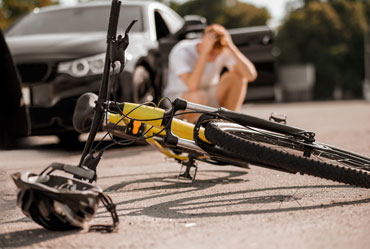Search

In an era where sustainability is increasingly valued, the humble bicycle has made a significant comeback. Once overshadowed by motor vehicles, bicycles now represent a healthy, eco-friendly, and cost-effective mode of transport. Yet, as the cycling revolution picks up speed, so too does the number of bicycle accidents. These incidents serve as stark reminders of the challenges cyclists face daily. Understanding their causes, impacts, and prevention strategies is crucial for safer journeys on two wheels.
City streets, bustling and teeming with activity, are both an opportunity and hazard for cyclists. While urban planners are gradually integrating cycling lanes into cityscapes, the reality is often fraught with risks. Cyclists share roads with buses, cars, and pedestrians, leading to an intricate dance that requires constant vigilance.
Bicycle accidents can arise from numerous factors, many of which involve vehicle interactions, environmental conditions, and human error. Understanding these can help in devising effective strategies to avoid such mishaps:
1. Driver Negligence: A leading cause of accidents is driver inattentiveness; whether due to smartphone usage, fatigue, or simple oversight, drivers often fail to notice cyclists until it’s too late.
2. Hazardous Road Conditions: Potholes, loose gravel, and slick surfaces pose significant threats to cyclists, who lack the stability and protection of a car.
3. Intersections and Junctions: These are critical points where the paths of cyclists and vehicles frequently cross. Miscommunication or misjudgment, especially concerning speed and signals, often leads to collisions.
4. Dooring Incidents: Sudden car door openings account for a fair share of urban accidents, trapping cyclists between the door and the moving lane.
5. Weather-Induced Challenges: Rain, fog, or snow can significantly reduce visibility, making it imperative for both cyclists and drivers to exercise increased caution.
Beyond the immediate physical injuries—ranging from abrasions to severe traumas like concussions—bicycle accidents carry long-term consequences. Victims often face psychological adversity, grappling with issues such as anxiety and trauma, which can deter them from riding again. Financially, the burden can also be significant, encompassing medical expenses and damage repairs.
Ensuring the safety of cyclists is a multifaceted endeavor, requiring action from cyclists, drivers, and policymakers alike:
1. Cyclist Education: Promoting awareness of road rules, defensive driving techniques, and the importance of visibility can empower cyclists. Helmets and reflective clothing are basic yet vital safety gear that should never be overlooked.
2. Motorist Awareness: Drivers must be educated on the rights of cyclists and the importance of vigilance. Campaigns and strict laws can reinforce this knowledge and promote cautious driving behaviors.
3. Improved Infrastructure: Investment in safe cycling infrastructure is crucial. Dedicated bike lanes, visible signage, and smooth road surfaces can significantly reduce accident rates. Innovative solutions, like cyclist-specific traffic lights and overpasses, offer additional safety layers.
4. Community and Advocacy: Local cycling communities can influence change by engaging with policymakers and raising public awareness. Advocacy groups can spearhead initiatives for safer cycling conditions and rally support for infrastructure investments.
5. Policy and Legislation: Comprehensive laws protecting cyclists and stringent enforcement can create a safer environment. This includes penalties for infractions like obstructing bike lanes or reckless driving near cyclists.
As we champion the bicycle as a cornerstone of sustainable urban mobility, the quest for safer cycling must accompany this shift. Understanding the dynamics of bicycle accidents fosters a proactive approach to reducing their occurrence. By combining education, infrastructure improvements, legal frameworks, and community involvement, we can transform our cities into welcoming spaces for cyclists. Let us strive towards a future where cycling isn’t just an option but a safe, enjoyable choice for everyone. The road to shared joy and mutual respect is one we can pave together, in tandem with our shared commitment to safety and sustainability.